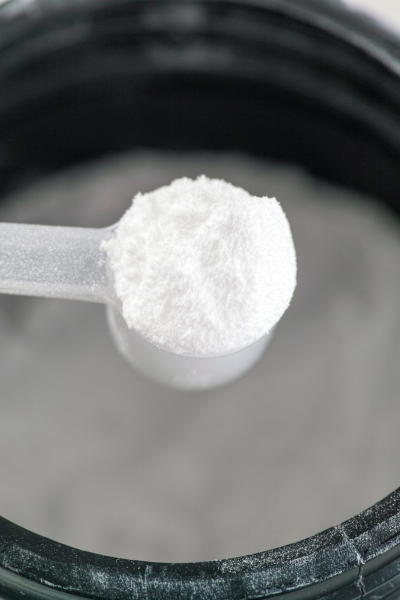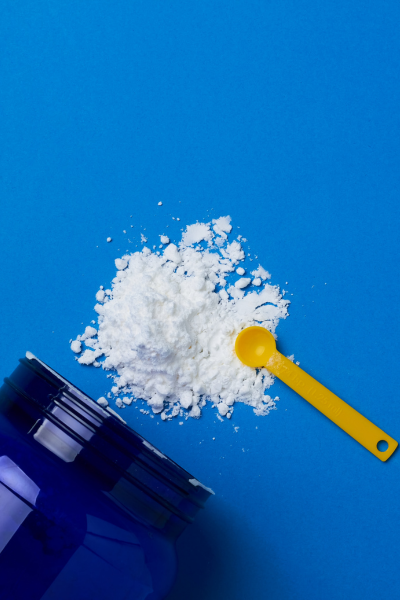There are many things we can do to improve our fitness level and enhance our recovery post-workout, but some methods and tools are a little more under-the-radar than most, so if you’re not doing these 5 things right now and want to experience better performance and improved recovery, consider trying these out:
 Glutamine. Glutamine is an amino acid that plays several important roles in our bodies (it’s involved in cell proliferation, energy production, glycogen synthesis, and ammonia buffering to name a few) and studies have shown its ability to reduce muscle soreness and damage and improve recovery post-exercise. Research shows that glutamine supplementation not only can reduce ammonia accumulation in the body but also protects athletes against increases in blood ammonia levels in both high-intensity and prolonged exercise. In recent years research has started to shift towards glutamine’s possible effects on Human Growth Hormone (HGH), with one study finding that a single dose of glutamine was sufficient to significantly increase HGH levels in healthy adults
Glutamine. Glutamine is an amino acid that plays several important roles in our bodies (it’s involved in cell proliferation, energy production, glycogen synthesis, and ammonia buffering to name a few) and studies have shown its ability to reduce muscle soreness and damage and improve recovery post-exercise. Research shows that glutamine supplementation not only can reduce ammonia accumulation in the body but also protects athletes against increases in blood ammonia levels in both high-intensity and prolonged exercise. In recent years research has started to shift towards glutamine’s possible effects on Human Growth Hormone (HGH), with one study finding that a single dose of glutamine was sufficient to significantly increase HGH levels in healthy adults
 Red Light therapy. This non-invasive healing modality improves general wellness, soothes aching muscles, and boosts recovery from sports injuries, making it the perfect device for athletes and active people. If you’re unfamiliar with red light therapy, it increases blood flow, stimulates cell regeneration, and helps the mitochondria in muscular cells complete their respiration cycle more efficiently, which in turn, results in your muscles suffering less fatigue. When you can improve your body’s mitochondrial respiration cycle, this leads to better activation and formation of muscle stem cells, which eventually grow into healthy muscle tissue. In addition, red light therapy reduces the inflammation that damages cells and makes your muscles feel sore and can also increase muscle growth. So not only does it make your workouts more effective, but it’s also a really great asset for post-workout recovery. Now can you see why I’m so obsessed with my Mito red light? If you want to see how incredible it is for yourself and try it out, don’t forget to use my code BRAD for a 5% discount.
Red Light therapy. This non-invasive healing modality improves general wellness, soothes aching muscles, and boosts recovery from sports injuries, making it the perfect device for athletes and active people. If you’re unfamiliar with red light therapy, it increases blood flow, stimulates cell regeneration, and helps the mitochondria in muscular cells complete their respiration cycle more efficiently, which in turn, results in your muscles suffering less fatigue. When you can improve your body’s mitochondrial respiration cycle, this leads to better activation and formation of muscle stem cells, which eventually grow into healthy muscle tissue. In addition, red light therapy reduces the inflammation that damages cells and makes your muscles feel sore and can also increase muscle growth. So not only does it make your workouts more effective, but it’s also a really great asset for post-workout recovery. Now can you see why I’m so obsessed with my Mito red light? If you want to see how incredible it is for yourself and try it out, don’t forget to use my code BRAD for a 5% discount.
 Breath work. Outside of workouts, there are many things we can do to absorb the workout stimulus optimally and recover quickly, and one interesting way of accomplishing this is through the practice of minimized nasal diaphragmatic breathing. After reading Patrick McKeown’s book The Oxygen Advantage, I became extremely enthusiastic about the importance and benefits of nose breathing during workouts, and at all times. If you’re too busy to read this excellent book, here is a quick summary instruction: “Strive to breathe as minimally as possible, through your nose only, at all times, for the rest of your life.”
Breath work. Outside of workouts, there are many things we can do to absorb the workout stimulus optimally and recover quickly, and one interesting way of accomplishing this is through the practice of minimized nasal diaphragmatic breathing. After reading Patrick McKeown’s book The Oxygen Advantage, I became extremely enthusiastic about the importance and benefits of nose breathing during workouts, and at all times. If you’re too busy to read this excellent book, here is a quick summary instruction: “Strive to breathe as minimally as possible, through your nose only, at all times, for the rest of your life.”
Note “minimally as possible.” If you need extra oxygen during challenging exercise, suck in big air through your mouth to perform and recover, then gracefully return to nose breathing when you can. I do my difficult but brief sprinting and jumping drills with nose breathing, then have to take several maximum mouth breaths after the set to recalibrate, then return to nose breathing.
The less oxygen you inhale with everyday breathing, the better you get at carbon dioxide tolerance. With improved carbon dioxide tolerance, you offload more oxygen to the exercising muscles. This is a brutally and blatantly overlooked element of athletic performance—you can actually perform better during exercise by minimizing breathing, and you can also recover more quickly because nose breathing (with the full use of the diaphragm) promotes parasympathetic function. In contrast, shallow, panting over-breathing stimulates sympathetic fight or flight function, so active folks and athletes can maintain aerobic function by limiting their effort level with nose breathing (and if you find oxygen levels to be insufficient, take it as a sign from your body that you just need to slow down).
 High-quality Protein. Protein is the #1 dietary objective for all athletes for a reason, so always try to source the highest quality protein possible, and if you’re like most athletes who prefer to supplement with a little extra protein in the form of a powder you can add to smoothies or beverages, please stay away from plant-based proteins and choose whey protein (I love grass-fed whey protein isolate instead of the more commonly used and cheaper whey protein concentrate–read labels carefully!). Whey isolate is a highly pure, highly digestible, easily absorbed protein source that contains all the essential amino acids and has been shown by research to promote muscle growth, reduce inflammation, and even help treat Type-2 diabetes and lower blood pressure. Bonus benefits? It’s highly satiating and can promote weight loss—perfect for anyone trying to get fit or maintain their fitness level.
High-quality Protein. Protein is the #1 dietary objective for all athletes for a reason, so always try to source the highest quality protein possible, and if you’re like most athletes who prefer to supplement with a little extra protein in the form of a powder you can add to smoothies or beverages, please stay away from plant-based proteins and choose whey protein (I love grass-fed whey protein isolate instead of the more commonly used and cheaper whey protein concentrate–read labels carefully!). Whey isolate is a highly pure, highly digestible, easily absorbed protein source that contains all the essential amino acids and has been shown by research to promote muscle growth, reduce inflammation, and even help treat Type-2 diabetes and lower blood pressure. Bonus benefits? It’s highly satiating and can promote weight loss—perfect for anyone trying to get fit or maintain their fitness level.
 Creatine. Creatine is the single most heavily researched and widely validated supplement of all-time to enhance muscle performance and recovery. Compelling new research reveals creatine also offers neuro-protective benefits to the brain, which helps your guard against the increasingly common diseases of cognitive decline. As it is widely regarded as the most effective exercise performance supplement, it is essential for athletes, especially aging athletes. If you haven’t tried it yet, get your bag of B.rad Superfuel here–it’s 17g of the best protein infused with 3 grams of creatine per scoop. We also have a great new flavor (Cocoa bean) out now to try!
Creatine. Creatine is the single most heavily researched and widely validated supplement of all-time to enhance muscle performance and recovery. Compelling new research reveals creatine also offers neuro-protective benefits to the brain, which helps your guard against the increasingly common diseases of cognitive decline. As it is widely regarded as the most effective exercise performance supplement, it is essential for athletes, especially aging athletes. If you haven’t tried it yet, get your bag of B.rad Superfuel here–it’s 17g of the best protein infused with 3 grams of creatine per scoop. We also have a great new flavor (Cocoa bean) out now to try!








